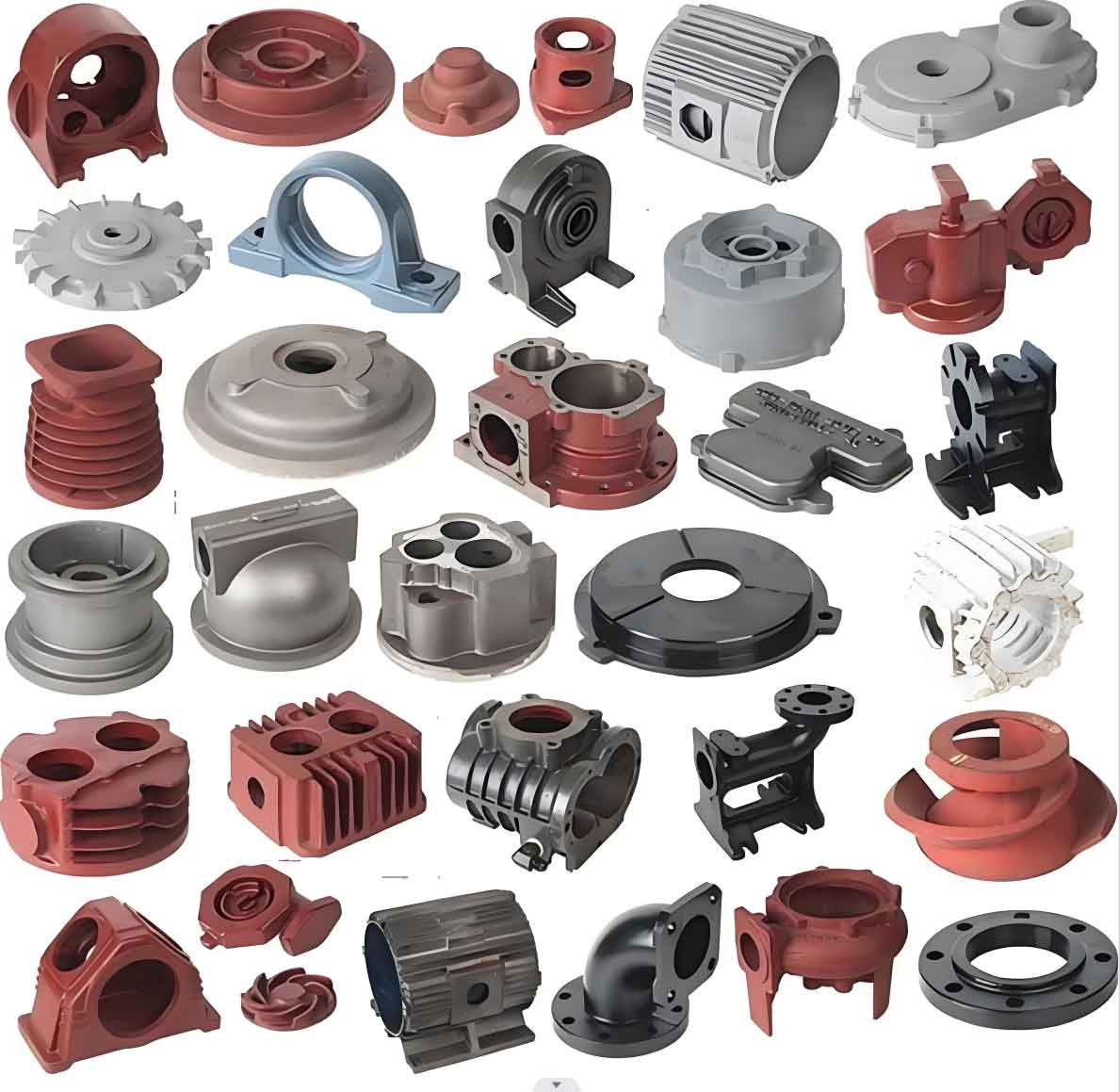
Microstructural analysis of ductile cast iron (DCI) is critical for understanding how its unique characteristics, particularly the presence of nodular graphite, influence its mechanical properties and overall performance. Here’s a detailed examination of this topic:
Key Aspects of Microstructural Analysis
- Graphite Nodules:
- Shape and Size: Nodular graphite typically appears as spheroidal inclusions within the iron matrix. The shape and size of these nodules are critical; ideally, they should be round and uniformly distributed to impart optimal mechanical properties.
- Nodule Count: The number of graphite nodules per unit area (nodule count) significantly impacts the mechanical properties of ductile cast iron (DCI). A higher nodule count generally enhances strength and toughness.
- Matrix Structure:
- Ferritic Matrix: A fully ferritic matrix provides good ductility and toughness but lower strength.
- Pearlitic Matrix: A pearlitic matrix, comprising alternating layers of ferrite and cementite, increases strength and hardness at the expense of ductility.
- Mixed Matrix: Most commercial ductile cast iron (DCI) contains a mix of ferrite and pearlite, balancing strength and ductility.
- Inclusions and Defects:
- Inclusions: Non-metallic inclusions (e.g., oxides, sulfides) can act as stress concentrators and negatively affect the mechanical properties.
- Defects: Shrinkage porosity, gas porosity, and slag inclusions can also degrade mechanical properties and should be minimized through proper casting techniques.
Impact of Nodular Graphite on Properties
- Mechanical Properties:
- Strength and Toughness: The spherical shape of graphite nodules helps distribute stress more evenly throughout the material, enhancing toughness and strength compared to gray cast iron with flake graphite.
- Fatigue Resistance: High nodule count and a uniform distribution contribute to better fatigue resistance by minimizing stress concentrations.
- Ductility: The round shape of the nodules helps in maintaining ductility, making ductile cast iron (DCI) more deformable under tensile stress.
- Thermal Conductivity:
- Heat Dissipation: The presence of graphite nodules, which are good thermal conductors, can improve the heat dissipation properties of ductile cast iron (DCI), beneficial in applications involving heat transfer.
- Wear Resistance:
- Surface Hardness: The pearlitic matrix enhances wear resistance. The nodular form of graphite contributes to a more uniform wear pattern.
Analytical Techniques
- Optical Microscopy:
- Used for examining the general microstructure, including the distribution, size, and shape of graphite nodules.
- Provides insights into the matrix composition (ferrite, pearlite) and the presence of defects or inclusions.
- Scanning Electron Microscopy (SEM):
- Offers high-resolution images of the microstructure, allowing for detailed analysis of graphite nodules and the matrix.
- Helps in studying fracture surfaces to understand failure mechanisms.
- Energy Dispersive X-ray Spectroscopy (EDS):
- Used in conjunction with SEM to analyze the chemical composition of the matrix and inclusions.
- Helps in identifying the distribution of alloying elements.
- X-ray Diffraction (XRD):
- Utilized for phase identification and quantification, especially useful in determining the amounts of ferrite, pearlite, and any other phases present.
- Image Analysis Software:
- Software tools can quantify nodule count, size distribution, and matrix phase proportions, providing statistical data crucial for quality control and material optimization.
Practical Implications
- Quality Control:
- Regular microstructural analysis ensures that the production process consistently yields ductile cast iron (DCI) with the desired properties.
- Identifying deviations from the optimal microstructure can prompt corrective actions in the manufacturing process.
- Material Optimization:
- By understanding the relationship between microstructure and properties, manufacturers can adjust processing parameters (e.g., cooling rates, alloying additions) to tailor the properties of ductile cast iron (DCI) for specific applications.
- Failure Analysis:
- Microstructural examination of failed components can reveal the root causes of failure, such as improper nodule formation, presence of inclusions, or inappropriate matrix structure, guiding improvements in future production.
By leveraging these microstructural analysis techniques, the impact of nodular graphite on ductile cast iron can be thoroughly understood, enabling the optimization of its properties for various industrial applications.
